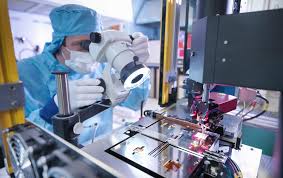What’s a more dangerous job, working in retail or working in a factory?
Most would say manufacturing, but according to the Bureau of Labor Statistics, retail jobs had a higher incidence of lost time work injuries than manufacturing in 2018.
If you read this blog on a regular basis, you know about the danger of retailing jobs. The workers’ compensation blogosphere runs “the dangers of holiday jobs” posts over the holiday season on a yearly basis to talk about risks of holiday employment in retail.
While automation, think self-checkouts, has eliminated some retail jobs, the remaining retail jobs usually require at least a 50-pound lifting restriction. Online shopping and competition from Amazon, means that more retail employees perform heavier and more dangerous warehousing and delivery tasks. The increased injury rate in retail work also means that more injured employees may be placed in light or alternate duty attendant jobs like the famous Walmart greeter job.
Workers’ compensation lawyer bloggers tend to write about jobs with high injury rates. But the story of retail employment isn’t just a question of retail work becoming more dangerous, it could also be caused by manufacturing jobs becoming less dangerous.
A recent article in the Wall Street Journal predicted that within a few years, the majority of manufacturing employees will have a college degree. The changing demographic of manufacturing employees is explained by increasing investment in manufacturing technology that will turn many manufacturing workers into machine operators who require specialized skills.
In theory — and practice – this investment in technology should make manufacturing jobs safer. But manufacturing jobs will still be more hazardous for the foreseeable future. Some investment in manufacturing technology involves cobbling together 2010s (and soon 2020s) software on top of machines built and designed in the 1960s. The dangers of this approach were exposed by two crashes involving the Boeing 737 Max. The 737 Max is an example of the hazards that workers’ can be faced with when companies mix 20th and 21st century technology.
 New manufacturing technology may also fail to take human factors into a consideration. An expensive new piece of machinery may increase productivity, but it may still require heavy lifting from a worker to process inputs. The new manufacturing economy probably won’t be as safe as portrayed in the pages of the Wall Street Journal and other publications targeted at wealthy professionals. Meanwhile, retail employment may be more dangerous than commonly understood.
New manufacturing technology may also fail to take human factors into a consideration. An expensive new piece of machinery may increase productivity, but it may still require heavy lifting from a worker to process inputs. The new manufacturing economy probably won’t be as safe as portrayed in the pages of the Wall Street Journal and other publications targeted at wealthy professionals. Meanwhile, retail employment may be more dangerous than commonly understood.

